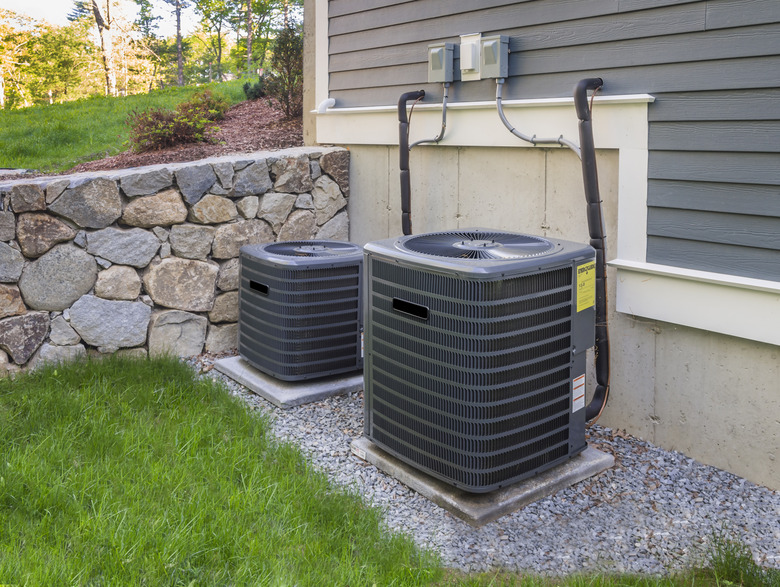Where Are Air Conditioner Drain Pans Located?
Air conditioner drain pans are an important part of your cooling system. Air conditioners dehumidify the moisture-filled air inside a room in addition to cooling it. Because of this, condensation collects inside the air conditioning unit and has to drain out. Both central air conditioners and room units have drain pans that catch this condensation and allow it to flow outside.
Tip
The air conditioner drain pan is located below the evaporator coils. Humidity from the air condenses on the evaporator coils and then drips down into the pan.
Central Air Conditioner Drain Pans
Central Air Conditioner Drain Pans
A central air conditioner is normally mounted in a chamber of the furnace above the furnace blower and combustion chamber. The unit's evaporator coils are located here, and directly underneath those coils is the drain pan.
The moisture that the air conditioning unit removes from the humid interior air condenses on the evaporator coils and drips into the pan. It keeps the water from dripping all over the mechanical parts of the HVAC system, which prevents major problems. A pipe normally runs from this pan, leading downward to a floor drain. The condensation drains through the floor and eventually flows to the outside.
Room Air Conditioner Drain Pans
Room Air Conditioner Drain Pans
Unlike a central air conditioner, a room air conditioner, such as a unit installed within a window, has both an evaporator pan and a condenser pan for the moisture removed from the air. A room air conditioner contains both the evaporator and the condenser in its shell, unlike a central unit where the condenser is outside.
The evaporator coils are normally located directly behind the room air conditioner's front grille. The water collects in the pan underneath those coils, and then drains through a tube toward the back of the unit into the condenser pan. From there, the water drains out the back of the air conditioner through a hole or a tube.
How the Water Forms
How the Water Forms
Every room has some level of humidity, which is the moisture level in the air. Once this moisture encounters the evaporator coils inside a central or room air conditioner, it condenses and transforms into liquid form. This liquid collects on the evaporator coils and eventually drips off, falling into the pan. This process allows the cooler, less humid air to flow out of the air conditioner and into the room.
Air Conditioner Drain Pan Maintenance
Air Conditioner Drain Pan Maintenance
Knowing where the unit's drain pans are located allows you to perform the necessary air conditioner maintenance that is needed to keep the air conditioner operating properly. Because an air conditioner also removes dust from the air, the pans in both a central and a room unit collect this dust, which can clog the system that allows the water to drain out of the unit.
For both central and room air conditioners, use a wet/dry vacuum to vacuum the drain pans and the evaporator coils regularly. Vacuuming helps protect against the clogged water draining into spaces it shouldn't, such as when a window unit drains onto the carpet instead of draining outside.
Look for cracks or holes in the drip pan. They can develop over time due to age or by direct impact. Cracks can be serious since they let the water drip into other parts of the HVAC system. Scheduling regular HVAC maintenance with a professional is a good way to identify those problems early before they cause damage.
